Navigating the complex business landscape requires foresight and adaptability. In exploring the Pestel analysis of DHL in 2024, we uncover the key elements shaping the company’s trajectory.
Understanding the importance of studying the environment is a strategic choice and a necessity for informed decision-making. DHL’s success story is intricately linked to its ability to align strategies with dynamic environmental changes.
Join us as we dissect the interplay between environmental analysis and strategic evolution, revealing insights driving DHL’s continued success.
DHL Overview
A Legacy of Innovation:
DHL’s story began in 1969 with a vision to revolutionize airfreight forwarding. Founded by three individuals – Adrian Dalsey, Larry Hillblom, and Robert Lynn – the company started by connecting geographically distant markets like San Francisco, Honolulu, and Los Angeles.
Their ambition fueled rapid expansion throughout the following decades, solidifying their presence across continents. In 2002, a historic acquisition by Deutsche Post cemented DHL’s position as the world’s leading logistics company, paving the way for further growth and innovation.
Diverse Services for Diverse Needs:
DHL’s extensive portfolio caters to a wide range of logistics needs. They offer:
- Express Delivery: Time-sensitive domestic and international shipments delivered with speed and reliability.
- Freight Forwarding: Transportation of large cargo by air, sea, or land, ensuring efficient movement of goods globally.
- Supply Chain Management: Comprehensive solutions for managing the entire flow of goods, from origin to destination, offering clients integrated control.
- Contract Logistics: Tailored solutions for specific client needs, including warehousing, distribution, and other value-added services.
- E-commerce Logistics: Specialized solutions for online retailers, supporting their fulfillment and distribution needs in an ever-growing e-commerce landscape.
A Competitive Landscape Demands Strategic Focus:
The logistics industry is fiercely competitive, with established players like FedEx, UPS, DB Schenker, and CEVA Logistics all vying for market share. DHL strategically navigates this competitive landscape by continuously innovating and differentiating its offerings.
They focus on providing integrated solutions and building robust global networks to maintain their leading position.
A Network of Partners Fuels Success:
DHL’s extensive operations rely on a complex network of suppliers who are critical to their success. These suppliers include:
- Transportation Providers: Airlines, shipping lines, and trucking companies form the backbone of their delivery network, ensuring goods reach their destinations efficiently.
- Technology Providers: Companies specializing in logistics software, automation equipment, and communication solutions equip DHL with the tools to optimize operations and provide seamless service.
- Equipment Manufacturers: Manufacturers of trucks, aircraft, containers, and other essential equipment ensure DHL has the necessary resources to carry out its logistics activities.
- Fuel and Energy Suppliers: Fuel providers for vehicles and energy for facilities keep DHL’s operations running smoothly.
Customers Spanning Industries:
DHL’s diverse customer base includes businesses of all sizes and various industries. DHL provides tailored solutions to meet the needs of small businesses, online retailers, large corporations, and government agencies.
Strategies for Continued Growth:
DHL prioritizes several key strategies to sustain its position as a leader in the logistics industry:
- Continuous innovation: Investing in technological advancements and exploring new solutions to enhance efficiency and customer experience.
- Sustainability: Focus on environmentally friendly practices and reduce their carbon footprint throughout their operations.
- Expansion: Strategically expanding their global network and service offerings to cater to a broader range of customers and markets.
Key Figures:
DHL boasts a vast presence with:
- Operations in over 220 countries and territories worldwide.
- Revenue exceeding €81 billion in 2023.
- A workforce of more than 550,000 workers globally.
These figures highlight the immense scale and reach of DHL’s operations, solidifying its position as a leading player in the global logistics landscape.
Now, let’s jump into the PESTEL analysis results of DHL!
Political environment
The political landscape can throw curveballs at global logistics companies like DHL. Here’s a breakdown of current and potential political issues to watch:
Current threats:
- Trade Wars and Tariffs: Imposing tariffs and trade wars between countries can disrupt established trade routes, increase costs for DHL, and force them to adjust their operations.
- Political Instability: Unrest in certain regions can make operating difficult or dangerous, leading to delays and disruptions for DHL’s services. For instance, the Houthi attacks in the Red Sea, and the war in Ukraine and Palestine.
- Government Regulations: Changes in government regulations regarding customs, security, or environmental standards can add complexity and cost to DHL’s operations.
Potential threats:
- Geopolitical Tensions: Escalating tensions between countries could lead to trade restrictions or even armed conflict, significantly impacting global supply chains and DHL’s ability to operate freely.
- Cybersecurity Threats: As governments increasingly rely on digital infrastructure, cyberattacks targeting critical infrastructure could disrupt logistics networks and impact DHL’s operations.
- Protectionist Policies: A rise in nationalism could lead to governments favouring domestic companies over foreign players, potentially limiting DHL’s growth opportunities in specific markets.
Also, there are a few political developments that could create opportunities for DHL to improve its performance:
Free Trade Agreements and Trade Blocs:
- Expansion into new markets: If new free trade agreements are established or existing trade blocs expand, it can create a smoother movement of goods across borders. This could benefit DHL by opening doors to new markets and increasing demand for international shipping services.
- Reduced trade barriers: Agreements that reduce tariffs and streamline customs procedures can make it cheaper and faster to move goods internationally. This could attract new customers to DHL and allow them to offer more competitive pricing.
Government Investment in Infrastructure:
- Improved logistics networks: Government investment in infrastructure projects like improved roads, airports, and ports can create a more efficient logistics network. This would benefit companies like DHL by speeding up delivery times and reducing costs.
- Focus on sustainability: If governments prioritize sustainable practices, it could create opportunities for DHL’s green initiatives. This could include funding for research and development of sustainable fuels or infrastructure for electric vehicles, potentially giving DHL an edge in eco-friendly logistics solutions.
Government Support for E-commerce:
- Growth in online shopping: Governments encourage e-commerce growth through policies and infrastructure development, which fuels demand for fast and reliable delivery services, a core strength of DHL. This can lead to increased business for DHL, catering to the growing e-commerce sector.
Regulation of the Gig Economy:
- Addressing labour shortages: Clear regulations for the gig economy could incentivize more people to become independent drivers or delivery personnel. This could help DHL address the current labour shortage in the logistics industry.
It’s important to remember that political landscapes can shift quickly, so DHL needs to be adaptable and prepared for changes that might be less beneficial.
While navigating the political landscape presents challenges, opportunities also exist. By staying informed about policy changes and strategically aligning its services with government initiatives, DHL can position itself to capitalize on these opportunities and achieve its goals.
Economic environment
The international economic environment, such as unemployment, inflation, exchange rates, and recession, can significantly impact DHL’s growth.
Here’s a breakdown of how these factors may affect the company:
Unemployment:
High unemployment rates can reduce consumer spending and business activities, impacting DHL’s shipping volumes.
During economic downturns, businesses may cut back on their shipping needs, affecting the demand for DHL’s services.
Inflation:
Inflation can affect DHL’s operating costs. Rising fuel, labor, and other resource prices may increase the company’s expenses. Managing these costs efficiently becomes crucial for maintaining profitability.
Exchange Rates:
DHL operates globally, and fluctuations in exchange rates can impact its financial performance. A strong U.S. dollar relative to other currencies can make DHL’s services more expensive for international customers, potentially decreasing demand.
Recession after Covid-19:
A global recession can decrease manufacturing, trade, and overall economic activity. As a result, businesses cut costs, and consumers reduce spending, reducing demand for shipping services.
Conversely, shipping volumes may also rebound during the recovery phase as economic activities pick up. Also, during the initial phases of the COVID-19 pandemic, there was a surge in e-commerce activities as people shifted to online shopping—this increased demand for shipping services, benefiting companies like DHL.
DHL reported strong financial results in its fiscal year 2021, with revenue growth driven by increased e-commerce demand. However, challenges such as higher operating costs due to the pandemic and supply chain disruptions were noted.
Social environment
Opportunities in the Social and Cultural Global Environment for DHL:
- Diverse Workforce Integration: Embracing cultural diversity within the workforce can enhance creativity, innovation, and adaptability, providing DHL with a competitive edge in the global market.
- Global Market Expansion: Capitalizing on cultural understanding allows DHL to tailor its services to specific cultural preferences, facilitating market expansion and better customer engagement in diverse regions.
- Corporate Social Responsibility (CSR): Aligning with social and cultural values can present opportunities for DHL to strengthen its corporate reputation through meaningful CSR initiatives, fostering positive relationships with communities worldwide.
- Technological Integration for Cultural Sensitivity: Leveraging technology to enhance cultural sensitivity in service delivery can improve customer satisfaction and loyalty, positioning DHL as a socially conscious and adaptable logistics provider.
Threats in the Social and Cultural Global Environment for DHL:
- Cultural Misalignment: Failure to understand and adapt to different regions’ diverse cultural norms and values may result in miscommunications, misunderstandings, and potential damage to DHL’s reputation.
- Social Media Impact: Negative social media trends can quickly influence public perception. DHL must manage its online presence to mitigate potential reputational risks arising from social and cultural controversies.
- Labour Relations: Social and cultural differences in labour practices across regions may pose challenges in maintaining consistent and fair employee relations, potentially leading to workforce dissatisfaction or legal issues.
- Political and Social Instability: Operating in regions with social or political unrest can impact DHL’s operations and threaten employee safety, requiring careful navigation and risk management strategies.
Strategically addressing these opportunities and threats within the social and cultural global environment can empower DHL to foster positive relationships, enhance its brand image, and navigate the complexities of the worldwide market.
Technological environment
Opportunities in the Technological Environment for DHL:
- Automation Advancements: Embracing advanced automation technologies enables DHL to optimize logistics operations, reduce costs, and enhance efficiency in the supply chain.
- Data Analytics for Precision: Leveraging big data and analytics provides DHL valuable insights for real-time decision-making, route optimization, and personalized customer services.
- Blockchain Integration: Implementing blockchain technology enhances transparency, traceability, and security in supply chain processes, ensuring trust and reliability for DHL’s customers.
- IoT for Real-Time Tracking: Utilizing Internet of Things (IoT) devices enhances tracking and monitoring capabilities, allowing DHL to provide customers with accurate and real-time shipment information.
Threats in the Technological Environment for DHL:
- Cybersecurity Risks: Increasing reliance on technology exposes DHL to potential cyber threats, emphasizing the need for robust cybersecurity measures to protect sensitive data and operations.
- Rapid Technological Changes: The fast-paced evolution of technology requires DHL to continually invest in innovation to stay competitive, with the risk of outdated systems hindering operational efficiency.
- Dependency on IT Infrastructure: Reliance on sophisticated IT systems makes DHL vulnerable to disruptions caused by system failures, cyber-attacks, or technological glitches, impacting overall business continuity.
- Tech-Driven Competition: Intense competition within the logistics industry driven by technological advancements necessitates DHL’s proactive adoption of emerging technologies to maintain a leading position in the market.
Ecological environment
Ecological Opportunities for DHL:
Sustainability Leadership:
As environmental concerns rise, DHL can position itself as a leader in sustainable logistics. This involves investing in electric vehicles and cleaner fuels to reduce the carbon footprint throughout their operations.
Optimizing routes and logistics processes can also streamline deliveries, minimizing fuel consumption. Offering carbon-neutral shipping options aligns with eco-conscious customers and appeals to environmentally-conscious businesses.
Growing Demand for Green Logistics:
The increasing demand for eco-friendly options by companies and consumers presents an opportunity for DHL. DHL can attract new clients and potentially command premium prices by providing sustainable solutions.
Government Incentives:
Governments may offer tax breaks, subsidies, or funding for companies adopting sustainable practices. This provides DHL with a financial edge in implementing green initiatives, making it a strategic move for both environmental impact and economic benefit.
Collaboration:
Partnering with environmental organizations or other logistics players can lead to innovative solutions and a broader industry-wide impact. Collaborative efforts contribute to the development and implementation of effective ecological practices.
Ecological Threats for DHL:
Stricter Environmental Regulations:
Governments may impose more stringent regulations on emissions, waste management, or fuel usage. Compliance with these regulations could necessitate significant investments by DHL in upgrading infrastructure and processes to align with the evolving environmental standards.
Fuel Price Volatility:
Fluctuations in fuel prices can significantly impact DHL’s operating costs. The dependence on fossil fuels makes them vulnerable to price spikes, posing a constant challenge to cost management strategies.
Customer Pressure:
Growing consumer and business expectations regarding environmental responsibility may lead to increased accountability for companies. Adverse publicity resulting from unsustainable practices could damage DHL’s reputation, affecting customer trust and loyalty.
Climate Change Impact:
Disruptions caused by extreme weather events or rising sea levels could significantly threaten supply chains and damage DHL’s infrastructure. Adapting to and mitigating these climate-related challenges becomes crucial for the resilience of DHL’s operations.
In conclusion, the ecological landscape presents both challenges and opportunities for DHL. Adopting sustainable practices allows DHL to turn environmental concerns into a competitive advantage.
However, the company must be prepared for stricter regulations, potential disruptions, and the ever-evolving demands of an environmentally conscious world. Balancing these aspects will be critical to DHL’s success in navigating the ecological landscape.
Legal environment
Legal Opportunities for DHL in the International Courier Market:
Trade Agreement Negotiations:
DHL can capitalize on legal opportunities by negotiating favorable terms in trade agreements, securing reduced tariffs, streamlining customs procedures, and improving market access.
Advocating for open trade policies aligns with promoting free trade principles, creating a more predictable and efficient operating environment.
An example is the recent renegotiation of the North American Free Trade Agreement (NAFTA) among the US, Mexico, and Canada, potentially providing DHL with new cross-border shipping opportunities.
Emerging Regulatory Landscape:
Adapting to new data privacy, security, and e-commerce regulations presents an opportunity for DHL to mitigate legal risks and build trust with customers.
Advocating for laws facilitating innovation and fair competition allows DHL to shape industry-friendly regulations, creating a favorable operating environment.
The implementation of the General Data Protection Regulation (GDPR) globally has prompted DHL to adapt its data practices and policies.
Intellectual Property Protection:
Securing intellectual property (IP) rights for technologies and branding protects DHL’s innovation and prevents unauthorized use.
Enforcing these IP rights strategically becomes crucial in preserving a competitive advantage. DHL actively defends the trademarks and patents associated with its logistics technologies and services.
Legal Threats for DHL in the International Courier Market:
Trade Wars and Sanctions:
Legal threats arise from trade wars and sanctions, which lead to disruptions in global trade, restrict market access, and increase operational costs.
Complying with complex regulations related to sanctions and trade disputes poses challenges. The ongoing trade war between the US and China has impacted DHL operations and introduced uncertainty in the market.
Antitrust Laws:
Navigating scrutiny of market dominance and fair competition under antitrust laws poses a legal threat. Concerns about antitrust violations can lead to legal investigations and potential penalties. Compliance with different antitrust laws across various jurisdictions presents a complex challenge.
Consumer Protection Regulations:
Compliance with complex consumer protection laws, which encompass data privacy, delivery timeframes, and complaint handling, is crucial.
Non-compliance may result in potential lawsuits or fines, highlighting the importance of adhering to these regulations.
DHL has faced lawsuits in the US for alleged delays and lost packages, underscoring the significance of regulatory adherence.
By proactively navigating the legal landscape, staying informed about emerging regulations, and advocating for favorable trade policies, DHL can mitigate legal risks and seize opportunities presented by the evolving legal environment in the international courier market.
Conclusion
As we delve into the comprehensive PESTEL analysis of DHL, it becomes evident that the company operates in a dynamic environment shaped by political, economic, social, technological, environmental, and legal factors.
This analysis has unveiled a spectrum of opportunities and threats that can significantly influence DHL’s trajectory in the coming years.
The political, economic, and legal landscape presents challenges and openings for strategic maneuvering. DHL’s management must stay attuned to geopolitical shifts, economic fluctuations, and legal developments to make informed decisions that bolster the company’s resilience.
In the social and cultural realm, understanding diverse customer preferences, embracing workforce diversity, and navigating societal trends are pivotal for sustaining and expanding DHL’s market presence.
Moreover, technological advancements offer avenues for efficiency, innovation, and staying competitive but also expose the company to cybersecurity risks and the need for continual adaptation.
The ecological dimension underscores the importance of sustainable practices in logistics. DHL has the opportunity to lead in environmentally friendly solutions.
Still, it must also navigate potential threats from regulatory changes, fuel price volatility, and the growing scrutiny of environmentally conscious consumers.
In this intricate web of opportunities and threats, the onus is on DHL’s management to astutely integrate these insights into their strategic planning.
By leveraging opportunities and proactively mitigating threats, DHL can enhance its performance and ensure its survival in a rapidly evolving global landscape.
Adapting to change, embracing innovation, and aligning with evolving customer and regulatory expectations will fortify DHL’s position as a forward-thinking leader in the competitive logistics industry.
PESTEL Analysis Examples
To better understand the PESTEL analysis, we invite you to read our recent free examples of the Pestel framework.
PESTEL analysis of FedEx
Click here to read our example of FedEx’s PESTEL analysis.
PESTEL analysis of Chipotle
Click here to read our example of Chipotle’s PESTEL analysis.
PESTEL analysis of Brazil
Click here to read our example of Pestel’s analysis of Brazil.
PESTEL analysis of Spotify
Click here to read our example of Spotify Pestel analysis.
Chick-fil-A PESTEL Analysis
Click here to read our example of Chick-fil-A Pestel analysis.
Costco PESTEL Analysis
Click here to read our example of Costco Pestel analysis.
Microsoft PESTEL Analysis
Click here to read our example of Microsoft Pestel analysis.
Disney PESTEL Analysis
Click here to read our example of Disney Pestel analysis.
Airline Industry PESTEL Analysis
Click here to read our example of the Airline industry Pestel analysis.
Walmart Pestel Analysis
Click here to read our example of Walmart Pestel analysis.
Amazon Pestel Analysis
Click here to read our example of Amazon Pestel analysis.
McDonald’s Pestel Analysis
Click here to read our example of the Netflix Pestel analysis.
Netflix Pestel Analysis
Click here to read our example of the Netflix Pestel analysis.
Apple Pestel Analysis
Click here to read our example of the Apple Pestel analysis.
Twitter Pestel Analysis
Click here to read our example of the Twitter Pestel analysis.
Facebook Pestel Analysis
Click here to read our example of the Facebook Pestel analysis.
Pestel analysis of the Social Media industry
Click here to read our example of the Pestel analysis of the Social Media industry.
IKEA Pestel Analysis
Click here to read our example of the IKEA Pestel analysis.
TESLA Pestel Analysis
Click here to read our example of the TESLA Pestel analysis.


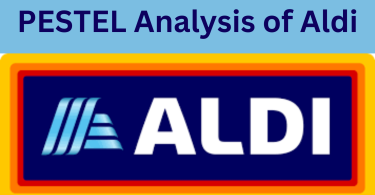
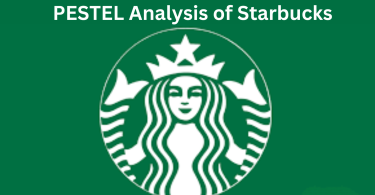
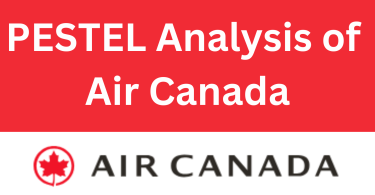
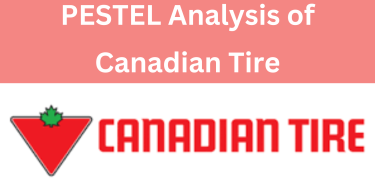


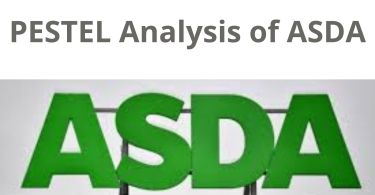
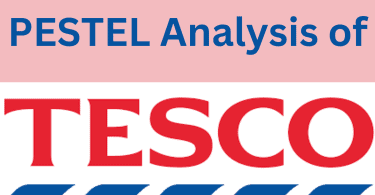
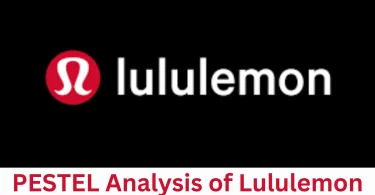
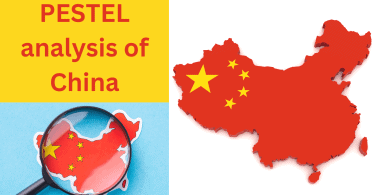
Leave a Comment